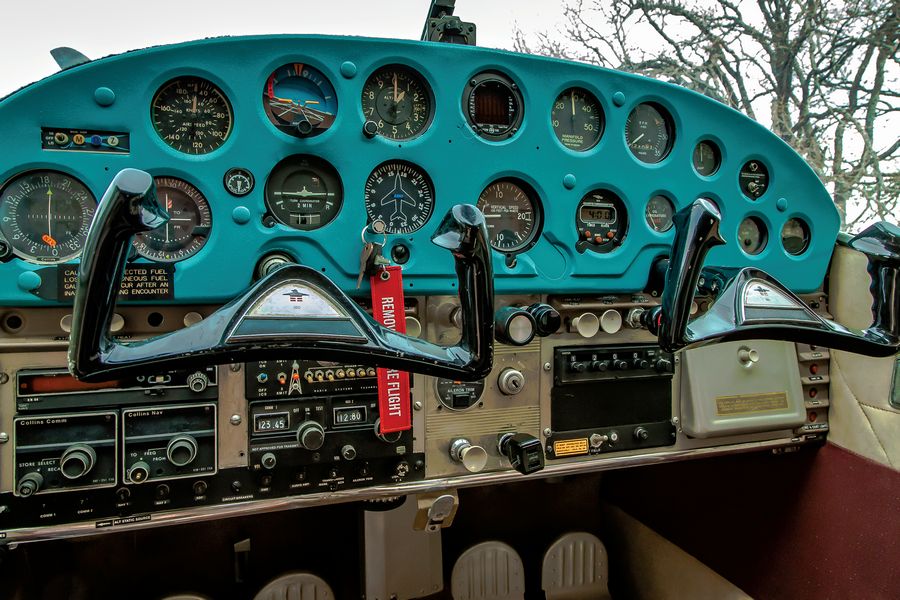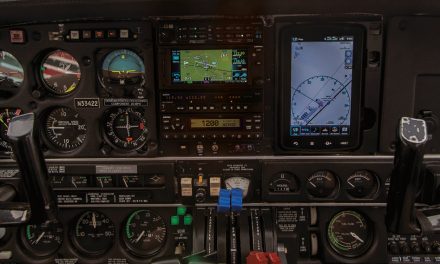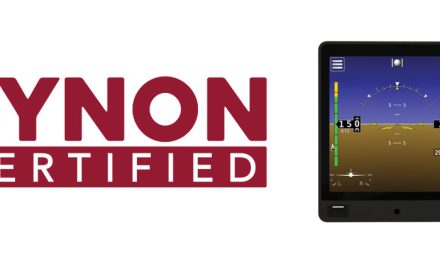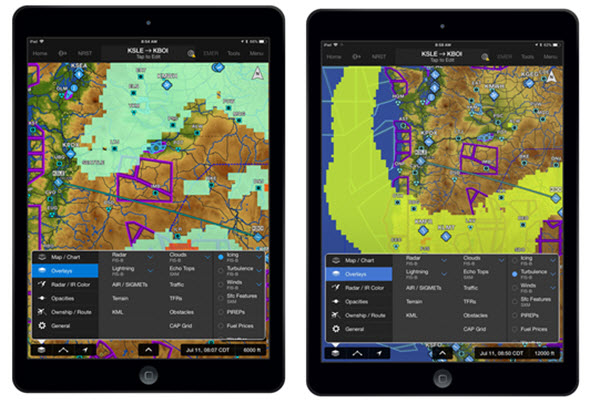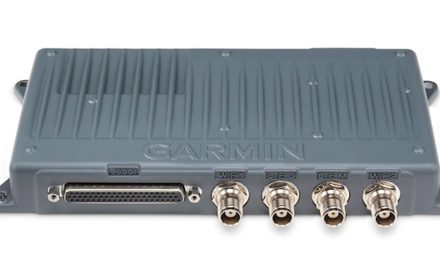What is worth the investment? It often depends on what will be repairable in the future
I got into the avionics business in 1997 when I joined the ranks of Eastern Avionics in Florida as an avionics consultant. We were the first avionics company on the World Wide Web in 1995, and that meant we had an international market. Frankly, we made a living on used avionics.
Bendix King had dominated the avionics market from the late ’80s through the early 2000s, and the hot item was used Bendix King. Garmin and UPSAT came along in the late ’90s and offered real options — that was the start of the end of BK’s dominance. We took a lot of Bendix King avionics in trade, reconditioned them (repaired and refinished), and resold them, often at a 50% profit margin. Our price was competitive, our product looked better, and we had no restrictions on shipping them anywhere. Like I said, we made a living selling used equipment, and it was the way a legacy aircraft owner could do a significant avionics upgrade without breaking the bank!
The situation today is quite different, for a number of reasons. The 1980s were when we saw a burst of new avionics manufacturers enter the GA marketplace. Narco, Collins, ARC (Cessna), and King (not Bendix King) were already there. All four of these manufacturers no longer exist, although some of their products are still being sold as used/SV (serviceable) with support from legacy avionics shops that still hold the repair manuals (an FAA must) and make repairs with parts taken from unserviceable cores.
There is still a place for these radios in a strictly VFR panel for a pilot on a budget, but none of these have any place in IFR, in my opinion, even as the backup radio. In IFR, if your primary radio fails (very often an integrated navigator), your back-up becomes the primary, and if you are comfortable in IFR with only a 50-year-old navcom in that situation, then you need to recheck your personal minimums! Here’s a very good place to do that: Go to the Aircraft Owners and Pilots Association (AOPA) website, aopa.org, search for “personal minimums,” and read the first article.
How Do You Get Repairs?
Avionics manufacturer repair policies have changed drastically in the last 25 years. Back then, most of the manufacturers provided parts support and repair manuals to their dealers and encouraged repair in the field. If you had a problem, you took your avionics to the local dealer. Repair was faster, the price was better, and you could be back in the air in a week.
Other than smaller, specialized manufacturers like JPI (where field repair is impractical), Garmin was the first full-line avionics manufacturer to require factory repair. They did not provide repair manuals for most of their products. Everything went back to Garmin and was billed at a flat rate. That was OK if you had a major failure, but if the repair was minor, you still paid the same.
The real issue comes when a manufacturer (like Garmin) decides to no longer support a legacy product. Here is a good example: If your 50-year-old King KX-170B fails today (King has been gone since about 1985), there is a shop out there that can repair it legally with used parts, because that shop still has the last version of the KX-170B repair manual in house.
When Garmin cancels parts and repair support for your 15-year-old GNS-430W — and this is coming very soon in my opinion — what happens to your GNS-430 when the display or com board fails? The answer is nothing. There will be no legal repair options. You get to throw it away. Avidyne and most of the new avionics manufacturers (uAvionix, Appareo, PS Engineering, Aspen, and Dynon) have the same policy.
In short, the manufacturer ultimately decides when a product is no longer viable. In fairness, this is more often about supporting older technology with parts that are no longer available or are obsolete by today’s standards. But I can think of a number of avionics that would still be viable if they were still supported!
So, let’s take a close look at what is still viable and what is no longer a consideration, by manufacturer. When I say viable, I am not talking about installing these but simply replacing them. The last time we did this was in 2016, and frankly the situation has changed considerably. The legacy aircraft owner on a budget has less to work with when trying to upgrade on the cheap. We will start with the older manufacturers.

Aircraft Radio Corporation (ARC)
ARC radios were standard factory-installed equipment in Cessna aircraft from the early ’60s through the early ’80s. You will still find some of these radios installed in legacy Cessna aircraft, but I have also found these navcoms installed in Pipers as an affordable replacement option. The ARC audio panel found in Cessnas was created for the aircraft, and finding an interchangeable replacement was never an option. Most pilots flying with the ARC navcoms have replaced them with new equipment, and the TKM slide-in replacements are the way to go, in my opinion. I would not spend a penny on an old ARC navcom repair. ARC transponders are done; it’s old cavity-tube technology. Automatic Direction Finding (ADF) as a concept is also gone.
King Radio
When we talk about King, the KX-170B leads the discussion. I remember debating Mark Scheuer, owner of PS Engineering, about whether the KX-170B or the KX-155 was the most popular navcom of all time. Mark felt it was the 170B; me, the KX-155. The KX-170B or KX-175B (TSO’d version) were very popular, and we still find some in legacy Pipers and Cessnas. Most have been upgraded or replaced with the popular TKM option (MX-170B or C). The complement to the KX-170B was the KMA-20 Audio Panel. They are still OK, and you can find them as low as $250 from reliable sources. Forget repair. The King transponder was the KT-76 or KT-78. Forget about it!
Collins Avionics
You will not find many legacy Piper and Cessna aircraft with Collins Microline avionics installed. However, like ARC radios in Pipers, the Collins navcoms and transponders have been an affordable replacement option for a number of years, and their reliability was reasonably good. Collins radios were the factory choice in Beechcraft Bonanza singles and Baron light twins. Their AMR-350 audio panel was rock-solid and is still an OK choice for the value-conscious owner looking to replace a failed unit.
I am talking about replacing a failed AMR-350 with another, not as a new installation! The Collins VHF-251 comms and VIR-351 navs have limited support, and parts are an issue. The comms and navs used to be available on the used market from reliable sources for under $500. I am not seeing this anymore. The Collins IND-351A (metal case!) nav indicator is actually the foundation for Garmin’s GI-106A/B. Collins sold the rights to S-TEC, and Garmin went to S-TEC to make their original GI-106 Course Deviation Indicators (CDI) using the IND-351A platform. So they are interchangeable and an affordable option for a Wide Area Augmentation System (WAAS) GPS installation. The TDR-950 transponder, like all the other early generation of transponders with a cavity tube, is obsolete.
Narco Avionics
My general advice for most pilots has been to shed your airplane of Narco, but there is a bit of a reprieve. The issue has been parts and, in the case of Narco specifically, failing displays. There was no replacement option, but the company producing replacement displays for the MK-12D/D+ units came back and has been offering displays. This does extend the useful life of Narco navcoms, as a source of displays remains available.
As for other Narco products worth considering as a replacement or otherwise, there is not much to consider. The AT-150 and older AT-50A transponders are older cavity-tube designs, but your money is better spent elsewhere. The last project for Narco before they failed was a new line of solid-state transponders called the AT-155/AT-165. If you have one of these, there is a shop in Florida that can repair these: www.transponderrepair.com.
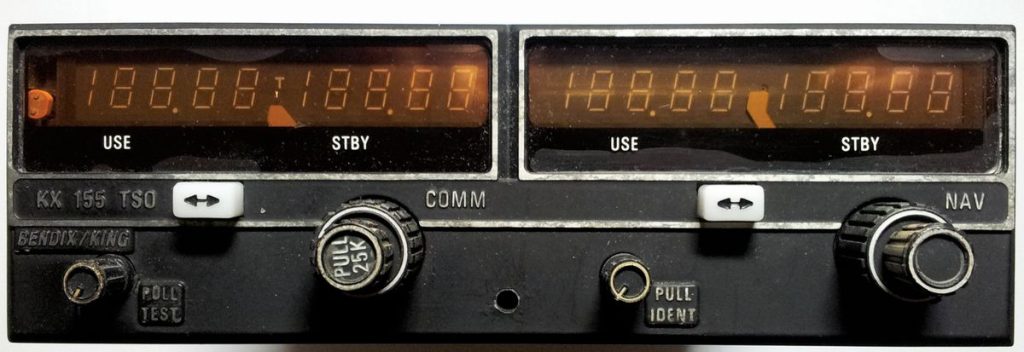
Bendix King
As I mentioned in the beginning of this discussion, Bendix King was the go-to company if you wanted to upgrade affordably with good used avionics. In my opinion, that is no longer the case. Display failures and expensive LED conversions plague the entire line, while repair in the field and the foundation of BK support is gone. Just as the KX-170B was the flagship for King radio, the KX-155/KX-165 navcom was what BK was best known for. Today, a display failure in a KX-155 normally results in a $2,500 bill for replacement of the display and repair of leaking capacitors for a radio designed in 1985. The remainder of the line suffers from the same issues.
The future of Bendix King as we know it appears to be about to change. Larry Anglisano from AVweb recently wrote about the new Honeywell Anthem and said, “The company made it clear that Anthem is not a Bendix King product. That division of Honeywell, I was told, will for now remain in place to sell and support autopilots and repurposed products from a handful of third-party manufacturers.”
The other half of this article can be seen only by paid members who are logged in.Have a website login already? Log in and start reading now.
Never created a website login before? Find your Customer Number (it’s on your mailing label) and register here.
Still have questions? Contact us here.
Conclusion
Life goes through cycles and so, apparently, does the used avionics market. Right now, the used avionics market is pretty much used up. Ten years from now, we will be seeing new products, and today’s products will be up for grabs. Until the next cycle, you will find it difficult if not impossible to upgrade a legacy panel on a budget using used avionics.
Thanks for reading! Until next time, Happy and Safe Flying!

